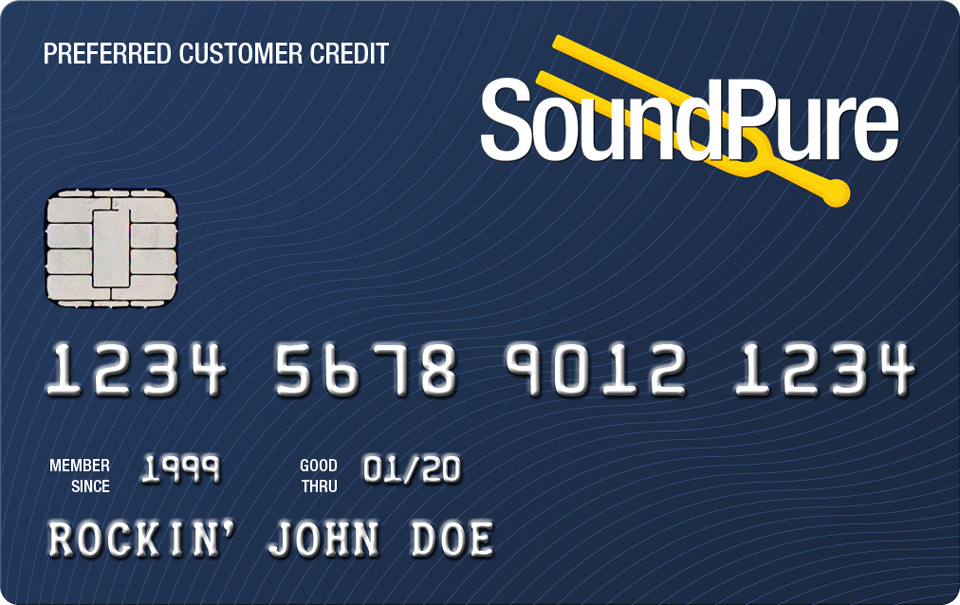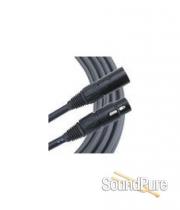|
RNLA FEATURES "WHAT'S COOL"
Wide Dynamic Range
Despite the unbalanced input/output connections, the RNLA has a dynamic range of 117dB, minimum, which is appropriate for today's digital systems and exceeds that which is attainable with many older, ìvintageî levelling amplifiers. The RNLA offers a clip point (<3% THD) of 22.5dBu.
Fidelity
Although the RNLA is designed to dynamically "color" the sound passing through it, the channel electronics are fairly neutral and designed so that the output signal (statically measured) closely resembles the input signal (fidelity defined...though slightly paraphrased). Each channel is hand-trimmed to typically less than 0.005% Total Harmonic Distortion plus Noise (THD+N). Even this low-level distortion is predominantly second-order...a much less heinous form of distortion and agreed by many to impart a slight "sweetness" to a signal.
Ugly and Cheesy Box
Like its FMR brethren, the RNC and RNP, we use a third-rack cabinet (still a hearty combination of extruded aluminum and steel) to allow us to throw the money we save in cosmetics into the quality of the audio electronics. Although we did decide to splurge a little by putting very red knobs on it along with a brushed-aluminum LexanTM overlay for that more impressively cheesy, "homegrown" look!
Easy-to-read Panel Graphics
This may seem like an arbitrary and trivial point, but we think it's important: easily assessing the settings on a rack-mounted processor is important when you've got a lot of stuff going on during a recording session. In our experience, dark lettering on a light background works better than the other way around.
Inputs and Inserts
As with the RNC, the RNLA has unbalanced inputs that also double as Tip-Ring-Sleeve (TRS) inserts to mate with popular mixer and equipment inserts. This allows you to connect, using only a single TRS-to-TRS cable per channel, an RNLA's channel (in & out) with a single cable to a mixer or other compatible device (such as our own Really Nice Preamp, Great River Electronics MP-NV preamp, etc.).
Balanced Outputs
The RNLA has balanced, non-differential outputs. Although the "cold" part of the signal is not driven (that would be a "differential" signalling scheme), the impedance in both legs are the same, thereby giving your audio the benefit of reduced noise if the RNLA is connected to a balanced line input.
Precise Gain Reduction Metering
A highly accurate gain reduction meter is provided to allow visual verification of what you're hearing. Although meters should never be a substitute for what you hear, a dynamically accurate meter is better than one that can "lag" or misread the actual dynamic performance of the compressor. Due to our digitally-controlled architecture, even the peak-detection errors of a pure digitally-implemented meter are avoided and a dynamically accurate meter is obtained.
Full Parametric Control
Some of the more common Levelling Amplifiers don't have full parametric control. Many LA's are missing the ability to control the ATTACK time. Some of them don't even provide a RATIO control, let alone a continuously-variable RATIO control! The RNLA provides both for maximum artistic flexibility. But, most importantly, both the ATTACK and RELEASE controls go to 11! In addition, all of the front panel controls are merely a "control surface" for the RNLA's internal digital engine. This means: (a) No main channel audio flows to/from the front panel controls that might increase its noise susceptibility (that's bad) or dreaded "scratchy pot syndrome" (that's annoying), and, (b) We can use a "ratiometric" measuring technique, along with robust digital filtering, to derive repeatable and precise compression parameters (that's good, if not a little geeky). Did I mention that the ATTACK and RELEASE controls both go to 11?
Alternative Release Contour
Loosely based upon the "Log/Lin" control on the Valley People's (Person's?) Gain Brain II, this control ("Log Rel") can help restore some "punch" that can get lost without an acceleration of the release envelope. So, when Log Rel is on, we accelerate the release time as a function of gain reduction amount. We've found this to be particularly handy on drum sub-mixes where we still wanted the drums to "punch", but in a compressed and controlled way (you know, it's really true: talking about audio is like dancing about architecture...).
Hardwired Bypass
We use a sealed relay (for long life) to switch the RNLA's output connectors between the output of the compression stage or the input jacks, thus providing a true bypass of the signal path. Worst case, without mains power, you'll still get a signal out of the RNLA!
Made In The U.S.A.
We want you to know that we do our own manufacturing here in beautiful Austin , Texas 'cause: (a) We live here. We're control freaks. We need things done to standards that are very specific and loftier than most. Manufacturing products here help control important costs and reduce waste (there's more to producing a product than just considering the costs of labor and parts). All this helps ensure that your RNLA will retain its value and continue compressing for many years to come, (b) Austin's resources and culture--from a very lively music scene to lots of high-tech companies/products--help inspire and maintain our committment to music and technology, and, (c) In order to help others, here and abroad, we believe we've got to be vital and capable ourselves. Our first choice is to employ as many U.S.-based resources as possible in the design, manufacture and distribution of our products.
Usable
The RNLA is designed for the real world. That means its knobs are spaced so you can turn them without screwing up other settings, and we carefully selected its fonts and colors so you can read your settings from across the room regardless of lighting conditions.
Visually Annoying
You can't escape, the BIG RED KNOBS! Even from across the room, they beckon "Turn me! Turn me!". Once you've turned one, you'll be hooked...
Flexible
The RNLA can be wired in two ways, using TRS or TS cables. TRS cables allow you to connect the RNLA directly to mixer inserts with one cable per channel; TS cables allow for other applications, such as patchbay connections. The sidechain uses a TRS connection; use an insert cable to connect it to a normalled patchbay.
WHAT SUCKS
The RNLA uses a wallwart. As with our other products, the RNLA uses a wallwart. This is done to: (a) reduce internal noise induction, (b) make the national/international regulatory compliance less costly, and, (c) to permit easy adaptation of the RNLA to countries other than the U.S.A. As practical as these reasons for wallwart use are, it doesnít reduce the annoyance factor that the RNLA uses a less common, *AC* wallwart. You can reduce this annoyance, however, by: (a) labelling your wallwart on both ends (i.e., on the part that plugs into the wall and at its opposite end) that the wallwart is for use with the RNLA, and/or, (b) use AC mains power strips that can accommodate the extra space required by wallwarts, and/or, (c) hook-up your wallwarts with one of those short, power cord extenders. In either case, what a pain wallwarts are...
The RNLA “colors” the audio
I don’t consider myself a “purist”, however, I have spent a fair amount of time/effort in the studio (and design lab) trying to reduce sonic coloration (i.e., distortion). Although I appreciate and applaud those who are skillful enough to record and mix with fidelity or coloration at will , I’ve always preferred fidelity over distortion...no matter how artsy it is! So, why are we now producing a device that deliberately distorts the audio? There are three reasons for this: (1) our customers have requested it and feel that they can’t get specific combination of features elsewhere, (2) I believe that the RNLA distorts in a tasteful, useful and controllable way, and, (3) Maybe you can teach an old dog new tricks: I’m actually learning to like and find uses for the sonics of the RNLA!
The RNLA has freakin’ Red Knobs
Proof, once again, that there’s “no accounting for taste”, I specified these knobs after a word-association game with my therapist. Here’s an excerpt:
Therapist: Dog?
Me: Compressor(?)
Therapist: Cat?
Me: Compressor(?!)
Therapist: Red knobs?
Me: Levelling amp! (???)
Okay, I made that up, but it could have happened! In any case, for those of you who are color-blind (or not) I apologize...
|

 Payments as low as $20/mo.
Payments as low as $20/mo.













